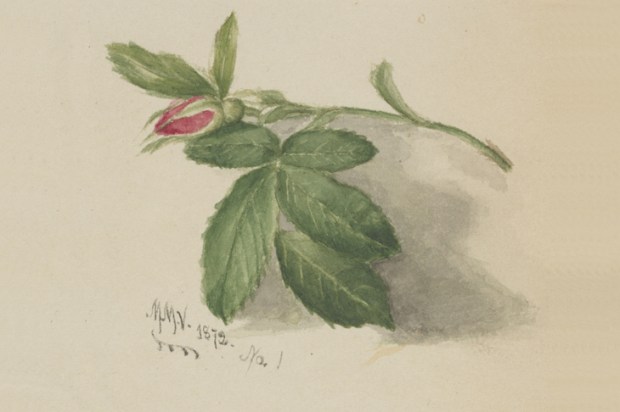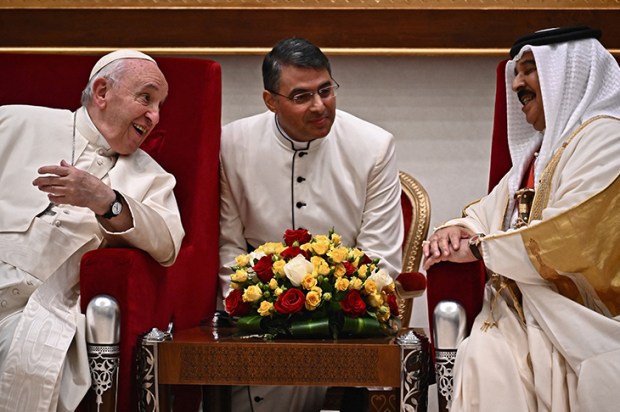In August 1971, President Richard Nixon requested Sunday-evening TV time to announce three fixes for a US economy damaged by overspending on the Vietnam war. His remedies were controls on wages and prices, a tax on imports and the suspension of the Bretton Woods Agreement that, via the gold-backed US dollar, had governed world trade since the second world war.
By never resuming the convertibility of the US dollar into gold, Nixon ushered in the modern era of fiat money – when money is of no intrinsic value. A worried Federal Reserve Chair John Burns wrote in his diary, ‘Are we going to build a new world in sheer bluff and bombast?’
The answer, of course, was yes. The fiat money experiment has succeeded for 54 years, even though the policymakers of 1971 had no means to ensure people would accept the overturning of the precious-metal-backed monetary systems that had operated for centuries.
Fiat money has worked by elevating the US dollar to a hegemony that no other currency has approached. Since 1971, a fully convertible US dollar has played a peerless role in global reserves, international trade and cross-border capital flows. Many countries have pegged their currencies to the greenback. The world’s most important interest rate gap is the spread between US rates and those elsewhere. The Fed has become the de facto world central bank. The US has absorbed the world’s excess savings and acted as the ‘consumer of last resort’ to drive global economic growth.
A notable difference between the heyday gold standard of 1870 to 1914 and the ‘dollar standard’, however, is that countries can pursue endless deficits or surpluses on their current accounts, the widest measure of a country’s international trade. These current account imbalances can persist as long as countries can attract or export the capital needed to balance their balance of payments (which comprise current and capital accounts). Unhindered capital flows into and out of the US are thus the foundation of the dollar standard.
These capital flows depend on two things. One is that Washington allows foreigners to own unlimited amounts of US assets. The other is that foreigners want to hold US securities. The dollar standard has succeeded because foreigners have (over-)invested in the US’s liquid capital markets where regulatory oversight, the rule of law and independent central banking have applied.
That foreigners hold US securities as reserve assets benefits the US. Washington can issue endless amounts of Treasuries – the US need not even hold forex reserves. The US’s capital account surplus allows it to run endless current account deficits. The country (until now) has had little need to worry about government deficits or the resultant pile of federal debt. The capital inflows mean the US enjoys lower interest rates and higher share valuations than otherwise.
One consequence of capital gushing into the US, however, is that other countries could pursue mercantilist policies that hurt US industry.
The world of fiat money is thus an unbalanced one. The tariffs imposed by President Donald Trump seek to address this unevenness. But this strategy is self-defeating because by doing so Trump is exacerbating the key weakness of the dollar standard; that any loss of foreign confidence in US assets upsets the system. The worry is that Trump is eroding investor trust in the US in at least four ways.
One is reduced faith in US economic fundamentals. Foreigners fret Washington has no desire to tackle its debt that now reaches 122 per cent of GDP. Nor does Washington have any yearning to rein in the budget deficit of seven per cent of output that Trump inherited. As Trump plans to renew, even extend, his tax cuts of 2017 and his advisers air plans to tax or forcibly swap bonds that would amount to de facto defaults, US bonds now incur a greater risk premium – higher yields that aggravate Washington’s deficit.
A second worry is the incompetent way the White House is pursuing radical half-baked policies. Trump has imposed tariffs in a chaotic way and has effectively imposed a trade embargo on China. Investors judge too that tariffs stoke US inflation, hurt its economy and, by improving the US trade position, give them less means and need to invest in US assets.
A third dampener is Trump’s attacks on civic, educational, federal, legal and political institutions paint him as an authoritarian who is willing to forfeit US advantages such as the rule of law and integrity of markets for political gain and crony enrichment. Investors think Trump is creating a rent-seeker economy where access will top ability.
A fourth worry are the attacks on Fed Chair Jerome Powell for saying tariffs are inflationary. While a backlash stops Trump sacking Powell, investors worry a Trump stooge will replace Powell when his term expires in May next year. That saps confidence inflation will stay tame. Investors think too Trump’s assaults make Powell less willing to cut rates, which makes a US recession more likely.
The US’s tarnished investment aura is prompting allies to ‘de-dollarise’ – sell US assets and thus diminish the US dollar’s reserve status – just as US foes must do to escape Washington’s financial sanctions.
US assets have largely struggled under Trump. The US dollar dived 10 per cent over Trump’s first 100 days. US bonds have unexpectedly traded like risky securities. The S&P 500 index’s decline of 7 per cent over Trump’s centenary of days is the worst start for a presidency since Gerald Ford in 1974.
The risk is a ‘sudden stop’ in investment inflows to the US shakes confidence in the dollar standard. As crypto, the euro, gold, Swiss franc, yen and yuan can’t replace the US dollar as the world’s reserve currency, a reordering of global trade and financial interactions would be necessary. Expect any dismantling of the dollar standard fiat money experiment to contrast with its smooth adoption.
Trump’s recent backtracking on tariffs and Fed threats have reinstalled some confidence in US assets, it must be said. But Trump’s tariffs are still damaging, the Fed’s independence is not assured, and his authoritarianism, incompetence and radicalism still stand. Foreigners were ‘overweight’ the US. Some of their pullback might just be reducing that.
More likely, however, foreign investors are losing confidence in the US. This capital strike could gain enough momentum to show how unstable is any fiat money system. As the Fed’s Burns noted, unbacked coinage is built on nothing but bluff and bombast.
Got something to add? Join the discussion and comment below.
You might disagree with half of it, but you’ll enjoy reading all of it. Try your first month for free, then just $2 a week for the remainder of your first year.













